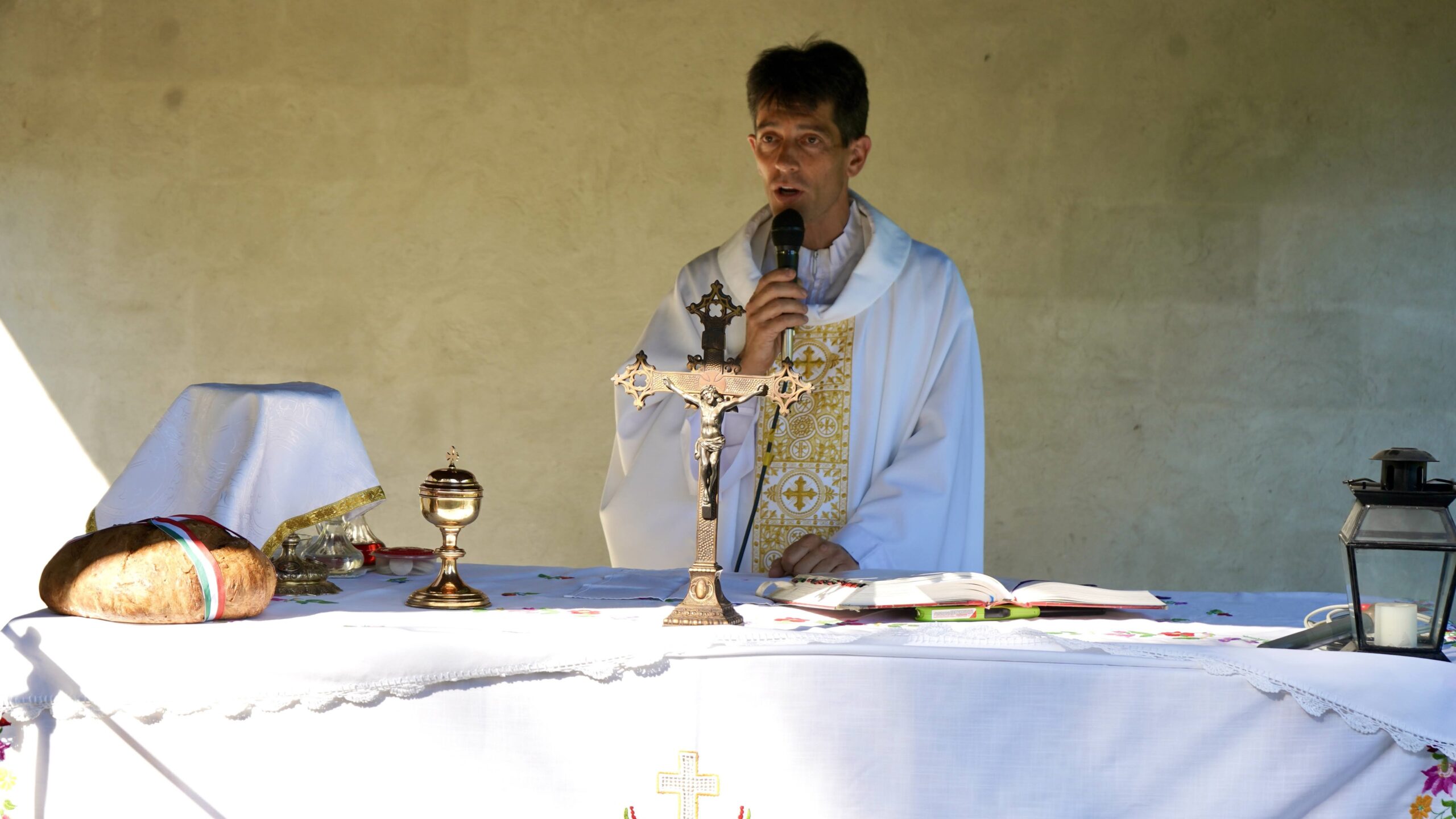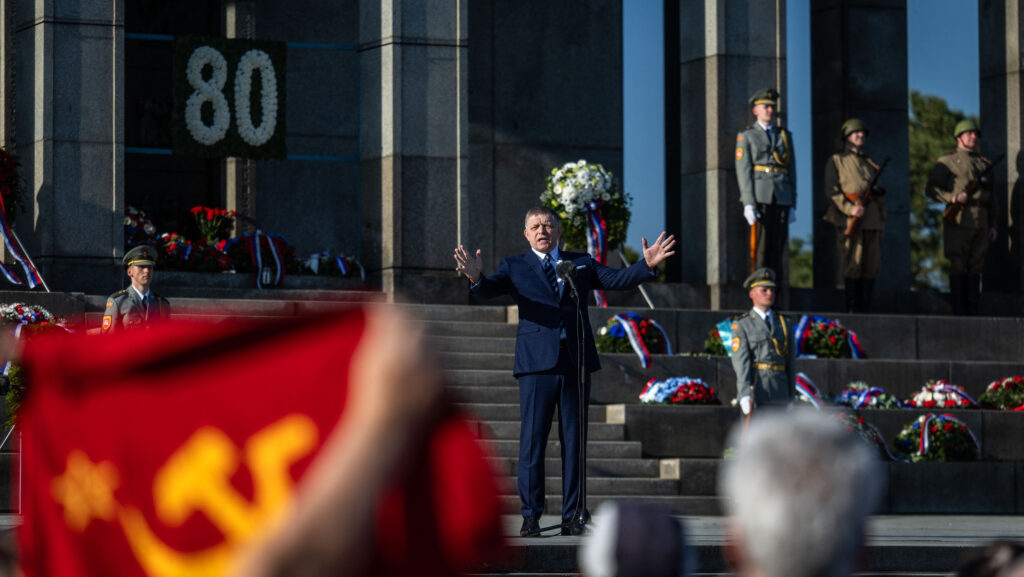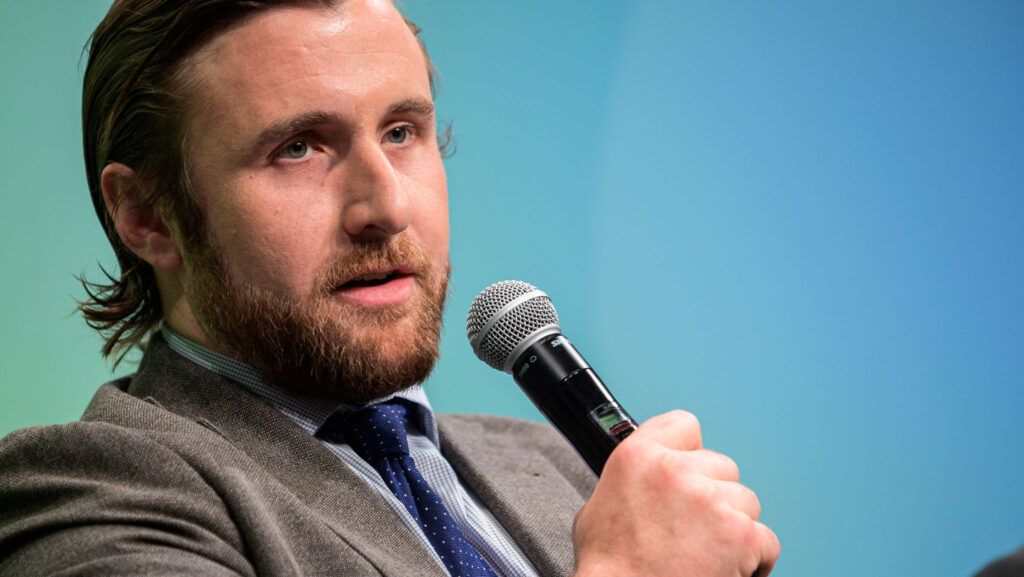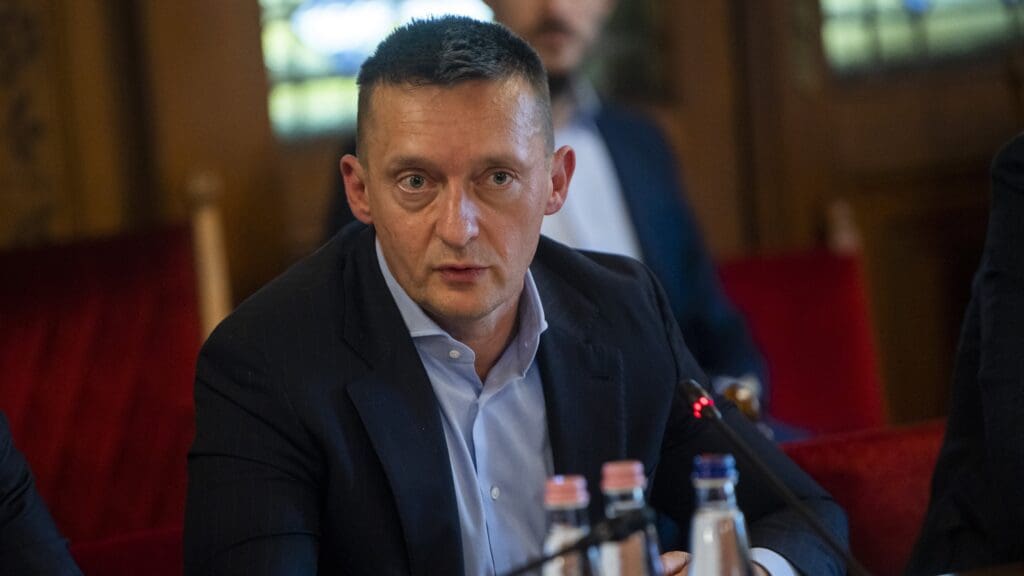This interview was first published in Hungarian on Magyar Kurír.
Pre-evangelization doesn’t really work here among the ethnically Hungarian population, Father Imre Juhász of New Brunswick, New Jersey, says. He arrived in the U.S. ten years ago from Mexico as a missionary priest. Although the New Brunswick area has the largest Hungarian population on the East Coast of the United States, it no longer has an independent Hungarian Catholic parish due to consolidation by the Diocese of Metuchen in 2014. In fact, Saint Ladislaus Church (as part of the new Holy Family Parish in New Brunswick) doesn’t have officially registered Hungarian parishioners nowadays, because all of its former parishioners who resided in the area have moved out over time.
Father Imre is resolute despite this fact, because the largely elderly Hungarian parishioners are attached to him for their spiritual and sometimes logistical needs, and because he can still help the local Hungarian institutions by for example baking, cooking as well as with the coordination of events of the Hungarian community. And also because of the massive Hispanic population that has found a new home in downtown New Brunswick. This Hispanic community is mostly of Mexican origin and quickly found a friend in him, given the five and a half years of missionary work he did in the Central American country. Although I’m also interested in his missionary work in Mexico, as well as his ties with the local Hispanic population, I asked him to lead me through the Hungarian aspects of the city’s history.
New Brunswick and the Hungarian Americans
The first large wave of Hungarians immigrated to the U.S. in the late 19th and early 20th centuries during the years of the second industrial revolution. Many moved from New Jersey westwards, to Pennsylvania’s coal mines. They lived in horrifically inhuman conditions: without housing and running water, usually renting beds, working in an eight-hour shift rotation. Despite these wretched conditions and their poverty, they still built churches, as they had an overwhelming desire to exercise their faith, explains Father Imre.
Today it’s a different story—he continues. ‘We can’t even keep the churches we have, let alone build new ones,’ despite everyone living at much higher standards, even the Hungarians, he says. Back then every immigrant ethnic group built a church for their own people. Until the 1980s, the community belonged to the Diocese of Trenton as it grew out of Saint Peter’s Parish in New Brunswick, where the first Saint Ladislaus Congregation gathered in the basement for Hungarian language Masses. But the newly immigrated Hungarians wanted a church they could call home—this is how the Saint Ladislaus Church Community was formed and incorporated in 1904. The founding Pastor, Father John Szeneczey—whose relief in solid brass is on the back wall of the church and whose portrait is in the church hall—gave his entire inheritance to the cause of building Saint Ladislaus Church, which was dedicated on July 4, 1906.
For ninety years, Franciscans served the needs of the parish until 2014, but then the Diocese of Metuchen decided to consolidate the city’s ethnic churches, including Saint Ladislaus Parish and formed the new entity of Holy Family Parish—consisting of Sacred Heart Church, Saint Ladislaus Church and Saint Joseph Church. Father Imre was serving in Mexico when he came to visit New Brunswick. After the Mass, he presented his missionary work in Mexico to the congregation. That’s when the parishioners raised the question: why was a Hungarian priest serving the Mexicans and not us, Hungarians here? Upon their request, spearheaded by the Hajdú-Németh and Varga families, Father Imre was transferred to New Brunswick to serve at Saint Ladislaus Church.
It was almost ten years ago, but Father Imre still has not been inducted as a diocesan priest. But if he was made one, he could be sent to another parish where the bishop of Metuchen has a need for a priest, because he could fulfill the obligations of the two Hungarian Masses per week from anywhere in the diocese. The present parish pastor wouldn’t let him go easily, because of his health issues and because Father Imre is able to say Mass in three languages. Previously, Saint Ladislaus Church was a so-called personal parish: everyone registered in the parish regardless of where they lived belonged to the parish. However, after the diocesan consolidation it became a so-called territorial parish. In the meantime, the Hungarian parishioners had all left the area because of its urban blight. As a consequence, currently there are no registered Hungarians in the parish. The consolidation made little practical change at Saint Ladislaus Church except to reduce the number of parishioners that want to belong here and their donations don’t directly go to upkeep Saint Ladislaus anymore. This has led to a significant reduction in charitable contributions to the church. ‘Those who belong to a church community regard it as their own and contribute accordingly’, explains Father Imre—but that’s not the case here anymore. This also means that the new Holy Family Parish keeps all the proceeds and there is no directing of funds towards any particular worship site or church for local community development.
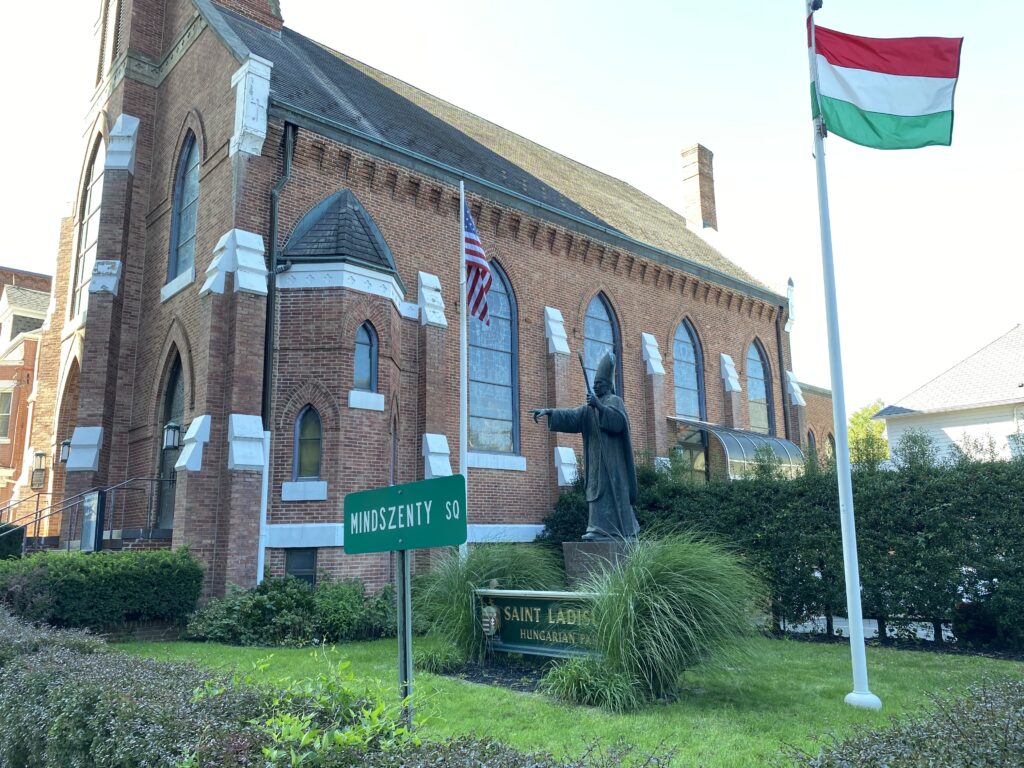
The trade-off is that they don’t get involved (for now) with the particulars of the ethnic community’s life. The Hispanics don’t build churches, they just move into existing churches, and if they don’t like the way things are there or they don’t get along, they go somewhere else. But the Hungarian, Polish, Italian etc. ethnic communities don’t have any other place to go if their ethnic churches are closed. This is a serious dilemma for Father Imre, whether to allow the Hispanics to make a home in Saint Ladislaus Church. He prefers to serve in Spanish practically anywhere they call him, but in Saint Ladislaus Church allows only occasional private Masses at the request of Hispanic families.
A Multi-ethnic and Multilingual Faith Community
Regarding the English language Masses, Father Imre confessed: practically there is none. Usually two Hungarian, two Polish, a Peruvian woman and a Mexican woman attend the morning Masses, but none of them can respond in English. In the largest of the three worship sites, in the Sacred Heart Church, there are no lectors for the readings in English. The catechism is in English, but only Hispanics are present. However, they understand neither language well, and identify with neither nationality: they don’t possess the new (English/American) but have forgotten the old (Spanish/Hispanic). They don’t understand the language of the faith either; for example, the concept of sin is completely foreign to them, they only know of bad behavior or ‘mal comportamento’. Thus, it’s almost impossible to teach catechism to them, even at a very basic level. They cannot recite the Lord’s prayer and there are occasions where communion receivers have to be instructed that the Holy Eucharist is to be placed in their mouth and not to be taken home. They are great in numbers, but they are more or less only spectators at Mass. The immigrant Hispanics are nearly illiterate, must work all day to survive, and there is very little communication between generations. They attend language classes only to be able to communicate with their own children. The same pattern can be seen regarding faith: the young people leave their faith as soon as they can: they don’t go to church any more after their First Communion.
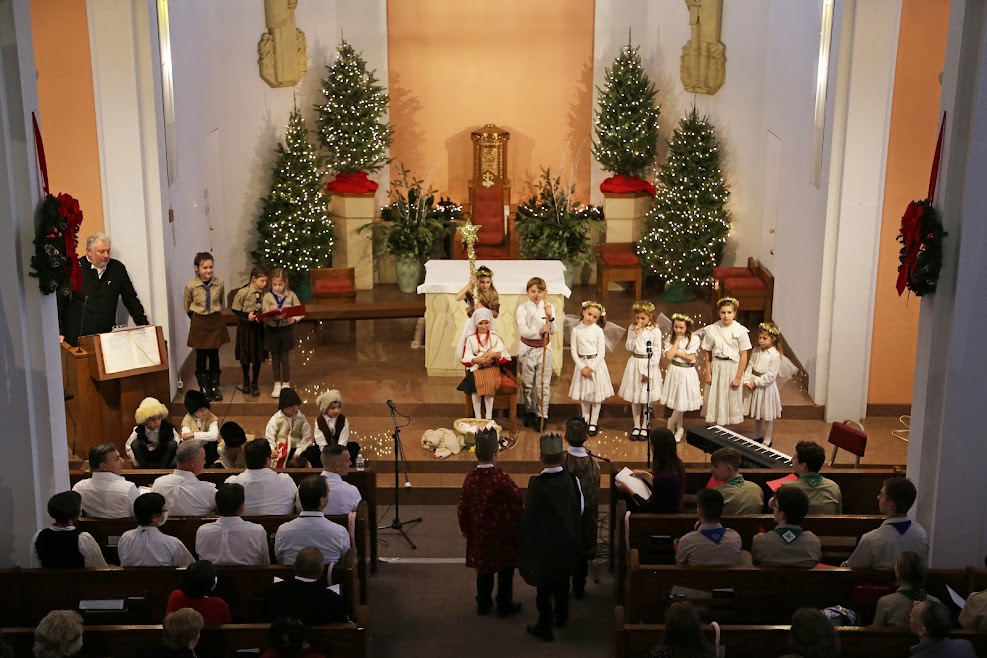
Hungarians are no different, he adds sadly. The attendance of the Hungarian Masses is very cyclical: during the Holidays and larger Feast days there are over 100, on smaller celebrations around 90, and during the summer months only 40–45 parishioners at each Mass, and even those are mostly elderly, who started to pass away in large numbers during and after the Covid pandemic. They have young families as well, but they normally send their children to parochial schools at their places of residence, so that they receive all the religious education and sacraments at those local parishes. The parish had five or six First Communions last year, but hardly any of those children come back to the parish. The parents here prefer a teacher (by contrast to a priest) to teach catechism. In the past, he would hold catechesis at the parents’ home while the dinner was being prepared. Now the catechesis is held in the church after Sunday Mass when he can’t be present because of his other Sunday obligations.
What is the Way Forward?
What is the main goal and how can we achieve it, I asked him. His candid response was that he doesn’t know, because it hasn’t been formulated. In contrast, the Hispanic parishioners are constantly planning and organizing new events and movements, and the parish where they can stake their flag flourishes for a while to their influx. The Hungarians don’t have this young energy anymore as they used to in the past: the Rosary Society is very elderly, a Saint Monika circle is made up of (great) grandmothers praying for their (great) grandchildren. The church has been providing a home for the Book Club organized by Mária Koller and the Voice of Poems (a literary event series) organized by Gyöngyvér Harkó for decades. There was a Hungarian Radio broadcast in the past at the nearby Rutgers University for decades as well, but it no longer exists.
The church basement is maintained by the Father to be used as a community hall. During the first months of the Covid pandemic there were no activities authorized by the parish priest (of the three churches) for quite some time, but he never restricted the parishioners from having community activities in the basement. For those elderly who experienced communism in Hungary, the situation resembled an underground network which they enjoyed. He also allows activities for the Hispanic population in the community hall such as retreat days and the like. The other worship sites still don’t allow any activities like that for the Hispanics, hence they come here. He refurbished the kitchens in the community hall as well as in the school building where he maintains large capacity kitchen equipment left from the former Saint Ladislaus School cafeteria, and makes it available to the whole community. He likes to cook and shares his knowledge with others. The revenues from the packaged food products that can be purchased by members of the Community cover the cost of all the upkeep and supplement the parish budget. One event’s surplus pays for the next event’s costs, as in Mexico, he says happily. The poorest Hispanic families are able to afford a baptismal dinner, the 15th birthday (‘quince años’ in Spanish), or a funeral repast; some even prepare the All Souls’ Day bread (‘pan de muerto’) here.
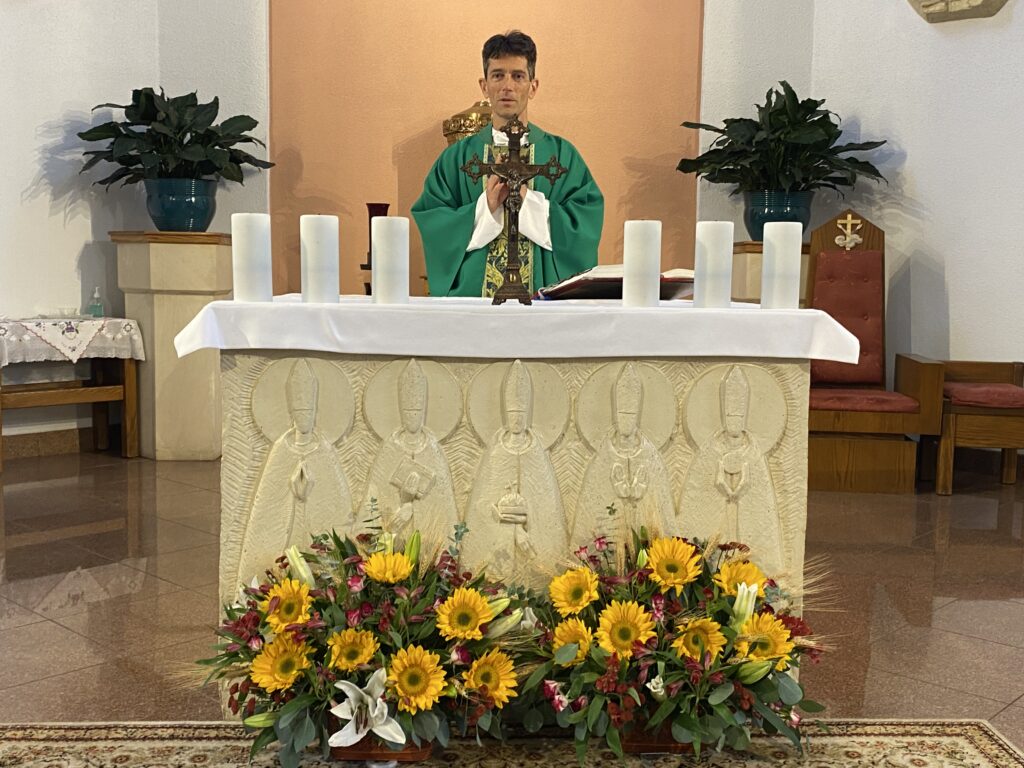
He prepares food also for the Hungarians: the walnut and poppy rolls (‘bejgli’ in Hungarian), the fried dough (‘lángos’) and sausages (‘kolbász’) for the Hungarian Festival, the largest local event of the year. There is a new generation of Hungarian population in the New Brunswick area as large as the previous 56ers. These new immigrants have come here for economic reasons, however they are no better off than they were in Hungary, because they normally lack the skills that are necessary to succeed.
The large majority of these recent immigrants don’t attend church services, yet those who don’t aspire to love their heavenly home, will not have an attachment to their earthly home either, Father Imre holds. Before the regime change in Hungary in 1989–90, the 56ers lived their community life in the churches and they never or only rarely returned to their homelands in the Carpathian Basin. The churches were the only shelters where they could be Hungarians at that time. Now, the world has opened up, and they can travel back to their homelands as many times as they please. So, the church isn’t needed anymore, he adds. Some are so affluent that they can hold 100–150 person parties in their own homes, therefore they have no need for the community hall either.
The essence of pre-evangelizing is that you are present everywhere in your community. Father Imre can be found basically at all Hungarian events, helping out and befriending people there so they feel comfortable coming to church; yet the Hungarian parishioners’ numbers have not grown. Pre-evangelization doesn’t work here, he sums it up. The Hispanic pastoral work in this regard is much simpler: they live close and that makes helping them easier. He visits the elderly monthly on the first Fridays of each month: for the Hungarians it’s a road trip every time since they live so far apart, for the Hispanics he uses his electric scooter and visits three-four in one afternoon. ‘If I plan to move any of my heavy kitchen equipment for an event, I have to give the Hungarians a week’s notice, while the Hispanics just come over from the neighborhood if I need help’, he states. The elderly Hungarians are attached deeply to the church, but the younger, more recently arrived Hungarians are visibly absent and feel that they don’t need it—in contrast to the Hispanic immigrants who do. The Hispanic workers can’t speak English, but they have faith and are willing to work and have a goal to settle here. However, their children won’t have a need for either faith or hard work either…
The Guidance of the Holy Spirit
Despite all the difficulties, Father Imre closes our discussion with these upbeat words:
‘The issues surrounding the Hungarian church community might seem difficult or even impossible to tackle, but occasionally you have to stop and be a realistic observer. Like an examination of conscience. You don’t have to make reality nicer, but face it, so that our weaknesses or faults can be recognized and adjusted. We have a need to renew the church from inside, which may not be obvious to us, but it’s not impossible either. Perhaps we should remove ourselves from the noise of the world, and all the forced responsibilities we place on ourselves so that we could hear God’s voice calling us in the silence. He saves us and redeems us. Perhaps, it’s less manpower what’s needed here, but more openness for direction from the Holy Spirit.’
Read more Diaspora interviews:

